This article explains how to update the Windows operating system using the Windows Update feature. While most updates are automatically installed on Windows 10, you can run a manual check at any time to see if a new major update has been released.
Steps
Method 1 of 3: Windows 10

Step 1. Click on the "Start" button
It is located in the lower left corner of the screen.
- Windows regularly checks for new updates and, in the event of a positive response, will automatically install them. However, you can use the method described below to perform a manual check to see if any new updates have been released since the last automatic check.
- After Windows finishes installing new updates, you may be prompted to restart your system. In this case you can restart your computer (or schedule an automatic restart) by following the instructions that will appear on the screen.
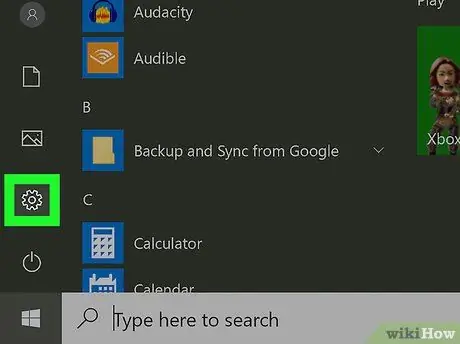
Step 2. Click on the "Settings" icon
It is located at the bottom of the "Start" menu.
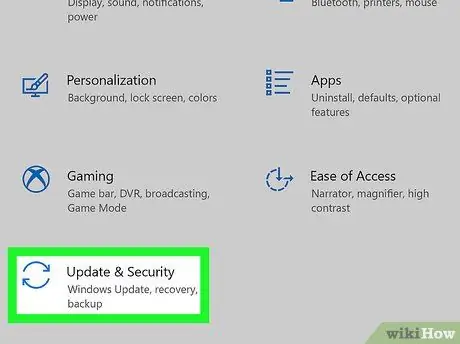
Step 3. Click the Update & Security icon
It is characterized by two curved arrows.
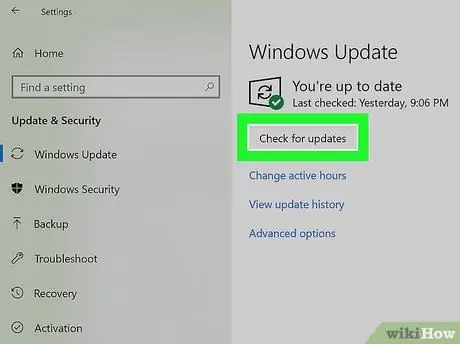
Step 4. Click the Check for Updates button
It is displayed at the top of the right pane of the page. Windows will check for new updates.
- If there are no new updates, the message "Your device is up to date" will be displayed.
- If there are new updates, they will be downloaded and installed on your computer automatically. The progress of the download and installation of each update is shown at the top of the right pane of the page, in the "Updates available" section.
- Do not close the window while the updates are being installed. By doing this you will know when and if you will need to restart your computer.
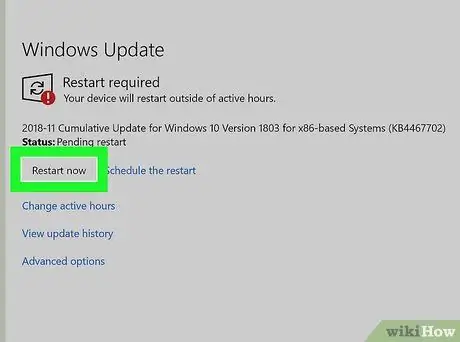
Step 5. Restart your computer when prompted
If the "Restart Required" warning message appears after the installation, you can choose to restart your computer immediately or schedule the restart later.
- If you have chosen to reboot now, save all open files, close all programs you were working on and click the button Restart now (it is visible in the Windows Update window).
- If you want to schedule your computer to restart at a later time, click on the link Schedule the reboot (it is visible in the Windows Update window), activate the blue slider by moving it to the right in the "On" position, then choose the time to restart the computer.
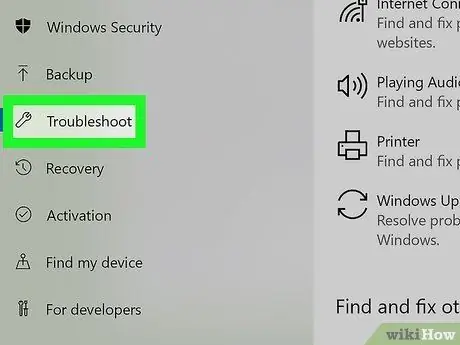
Step 6. Troubleshoot update failure to install
If an update fails to install or an error message appears, try following these instructions:
- Make sure your computer is connected to the internet;
- Try to restart the system and repeat the update procedure with Windows Update;
- If the problem persists, go to the menu Settings, click on the icon Update and security and then on the board Troubleshooting visible in the left pane of the window. At this point click on the option Windows Update displayed in the "make it operational" section and follow the instructions that will appear on the screen to try to solve the problem.
Method 2 of 3: Change Windows Update Settings (Windows 10)

Step 1. Click on the "Start" button
It is located in the lower left corner of the screen.
Windows regularly checks for new updates and, in the event of a positive response, will automatically install them. However, the user still has some control over how this happens. Use the instructions described in this article method to customize the Windows update process
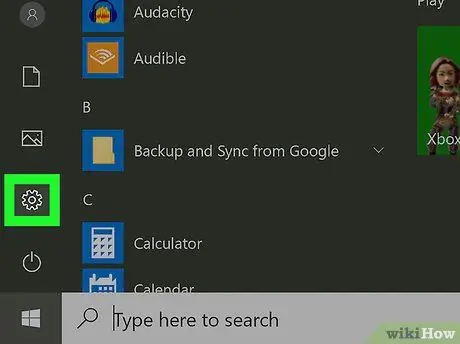
Step 2. Click on the "Settings" icon
It is located at the bottom of the "Start" menu.

Step 3. Click the Update & Security icon
It is characterized by two curved arrows.
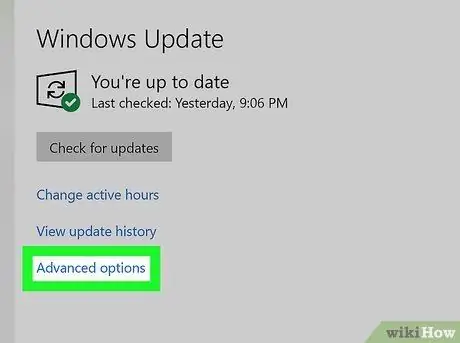
Step 4. Click on the Advanced Options item
It is listed at the bottom of the right pane of the window.

Step 5. Use the sliders listed in the "Update Options" section to configure the settings as you wish
- Receive updates for other Microsoft products during the Windows update - This option allows the Windows Update service to download and install updates for other Microsoft products, if any, such as Office, Edge and Visio.
- Download updates with metered connections - if you have a rate plan that includes a limited number of GB or if you pay based on the amount of data you download from the web, do not activate this option. When the slider of this setting is in the "Disabled" position, you will only receive a notification message when new updates are found, after which you will have to manually authorize the download.
- Show a notification when the PC requires a restart to complete the update - (if you are using an older build of Windows 10 than the current one, a slightly different wording may be displayed) If you want to receive more notifications about when your computer will need to be restarted, enable this option. It can be helpful to do this so that you don't get caught in the middle of work when Windows has to restart your computer after an update.
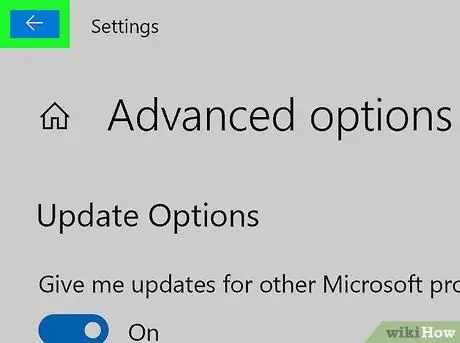
Step 6. Click on the "Back" button
It is located in the upper left corner of the window. This will take you back to the Windows Update screen.
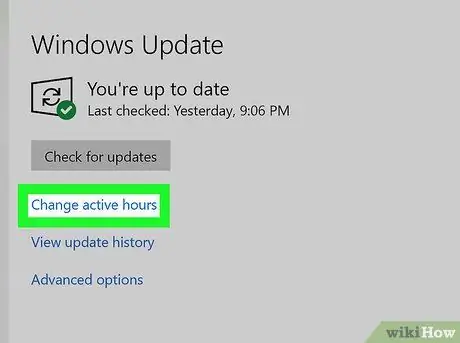
Step 7. Click on the Change Business Hours option
It is listed in the right pane of the window, above "View update history".
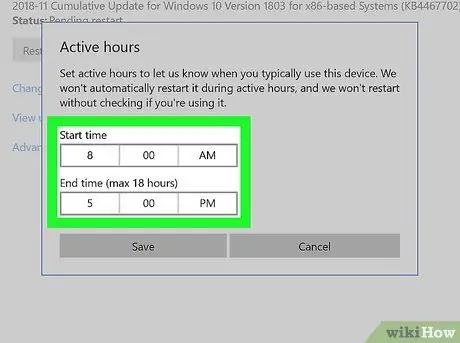
Step 8. Set the time of day you use your computer the most
Since Windows will have to automatically restart your computer after installing critical or important updates, make sure this doesn't happen while you are using your PC to perform important tasks. Set a start and end time (you can cover a maximum of 18 hours), then click the button Save.
Method 3 of 3: Update Windows 7

Step 1. Click on the "Start" button
It is located in the lower left corner of the screen.

Step 2. Click on the All Programs item
A list of all programs installed on the PC will be displayed.
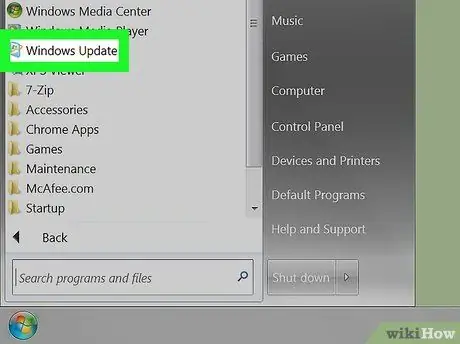
Step 3. Click on the Windows Update icon
The Windows Update window will appear.
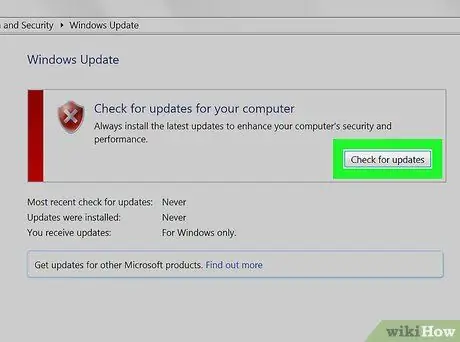
Step 4. Click the Check for Updates button
Wait for Windows to check for new updates that have not yet been installed on your PC.

Step 5. Click the Install Updates button if there are new updates to install
If Windows detects updates to install, the corresponding number will be displayed at the top of the window. Click on the indicated button to start the installation.
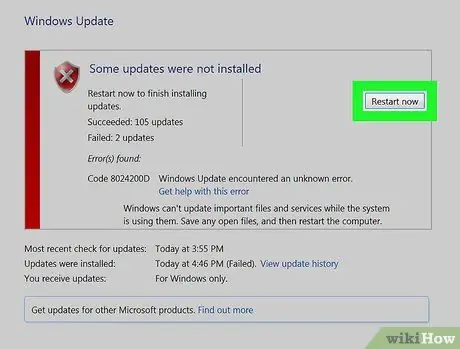
Step 6. Follow the on-screen instructions to complete the computer update
Most updates require a system restart to complete the installation. After the reboot is complete, the computer will actually be updated.






